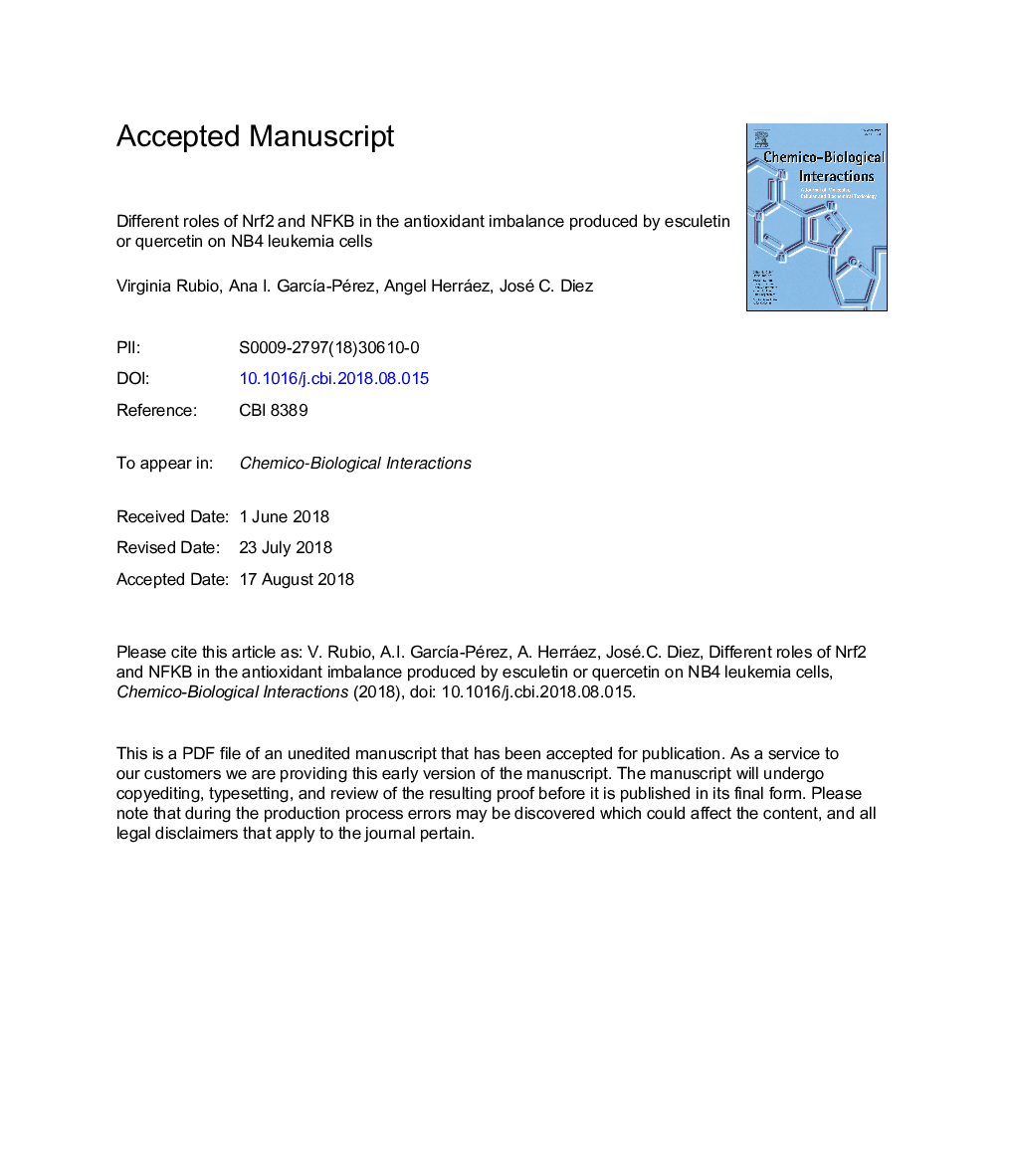| Article ID | Journal | Published Year | Pages | File Type |
|---|---|---|---|---|
| 10137704 | Chemico-Biological Interactions | 2018 | 37 Pages |
Abstract
Esculetin (6,7-dihydrocoumarin) and the flavonoid quercetin (3,5,7,3â²,4â² pentahydroxyflavone) are compounds that could change the balance of redox homeostasis. NB4 leukemia cells were treated with 25â¯Î¼M quercetin for 24â¯h and with esculetin at either 100 or 500â¯Î¼M for different times. Quercetin increased the levels of pro-inflammatory NFkB p65 in the nucleus correspondingly reducing them in the cytosol. The levels of NFkB p65 decreased in the nucleus at high esculetin concentration treatments for long times (19â¯h), concomitantly increasing the levels of anti-inflammatory NFkB p50 in the nucleus. This could suggest formation of inhibitory p50 homodimers possibly related with anti-inflammatory response. Lipoxygenase expression was reduced either by esculetin or quercetin. A significant increase of Nrf2 in the nucleus of NB4 cells treated with 100â¯Î¼M esculetin for 19â¯h was observed. Quercetin increased the levels of Nrf2 in the cytosol reducing them in the nucleus. Superoxide dismutase expression increased in NB4 cells treated with esculetin in contrast with quercetin. All these data support a relevant differential role for NFkB and Nrf2 in anti-inflammatory and redox response when apoptosis was induced by esculetin or quercetin in human leukemia NB4 cells.
Keywords
BSOAnnexin V-FITCAPLtert-butylhydroperoxide3-(4,5-dimethylthiazol-2-yl)-2,5-diphenyltetrazolium bromideDMSOMTTROSt-BHPHydrogen peroxideAntioxidantsEsculetinLOXApoptosisDimethyl sulfoxideSODSuperoxide dismutaseAcute promyelocytic leukemialipoxygenaseHydroethidineH2O2DHEPropidium iodideHELReactive oxygen species
Related Topics
Life Sciences
Environmental Science
Health, Toxicology and Mutagenesis
Authors
Virginia Rubio, Ana I. GarcÃa-Pérez, Angel Herráez, José C. Diez,
